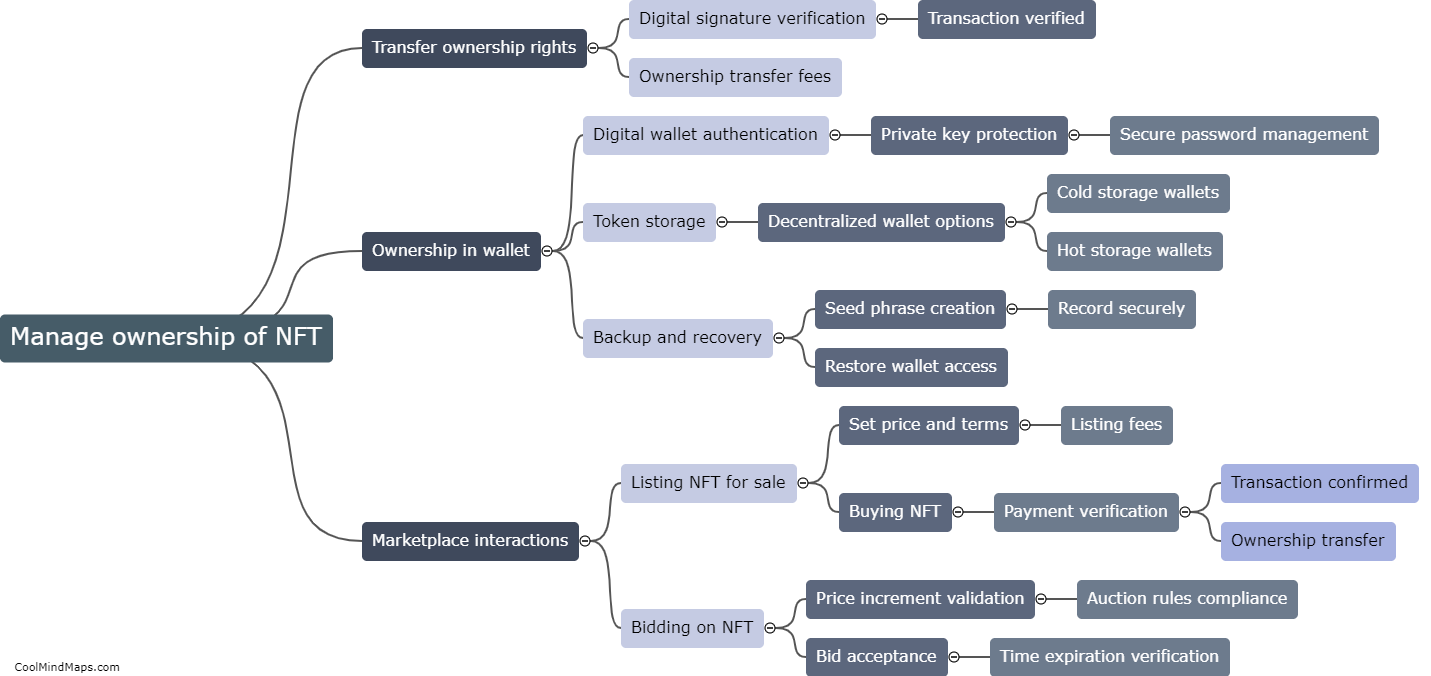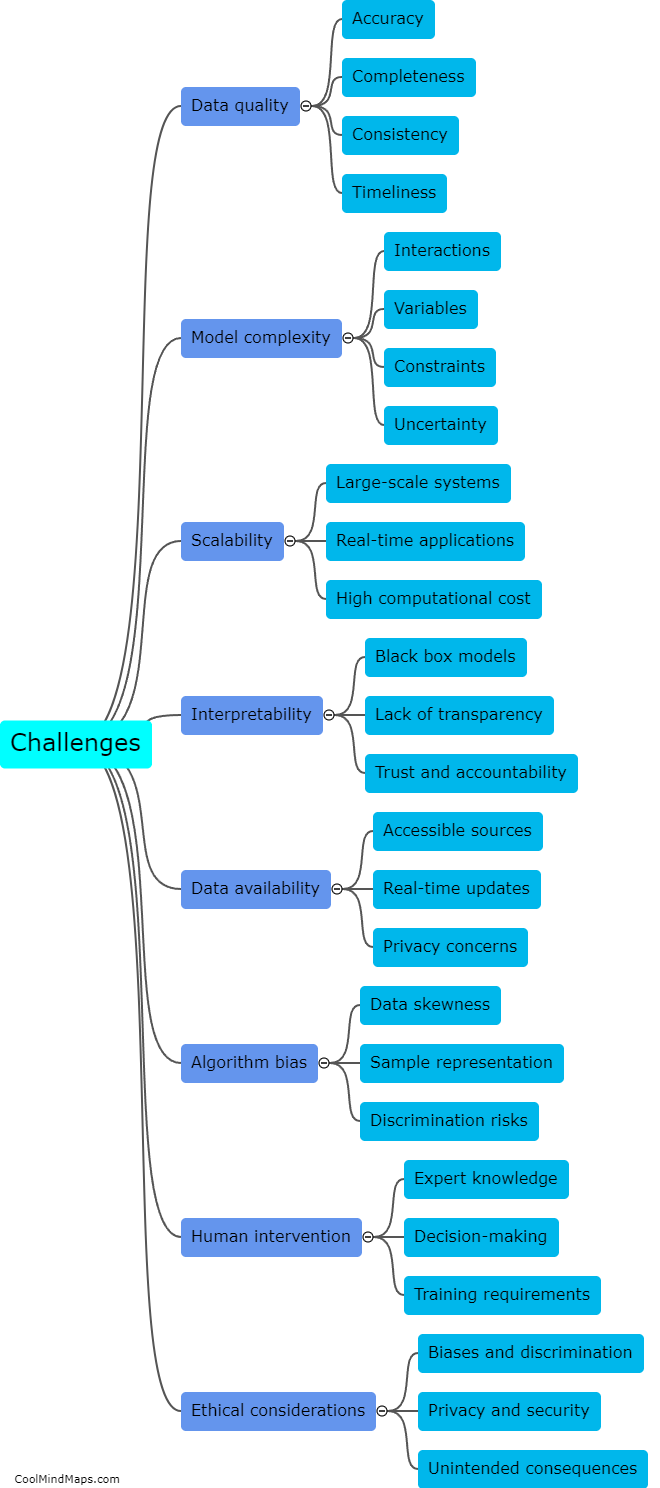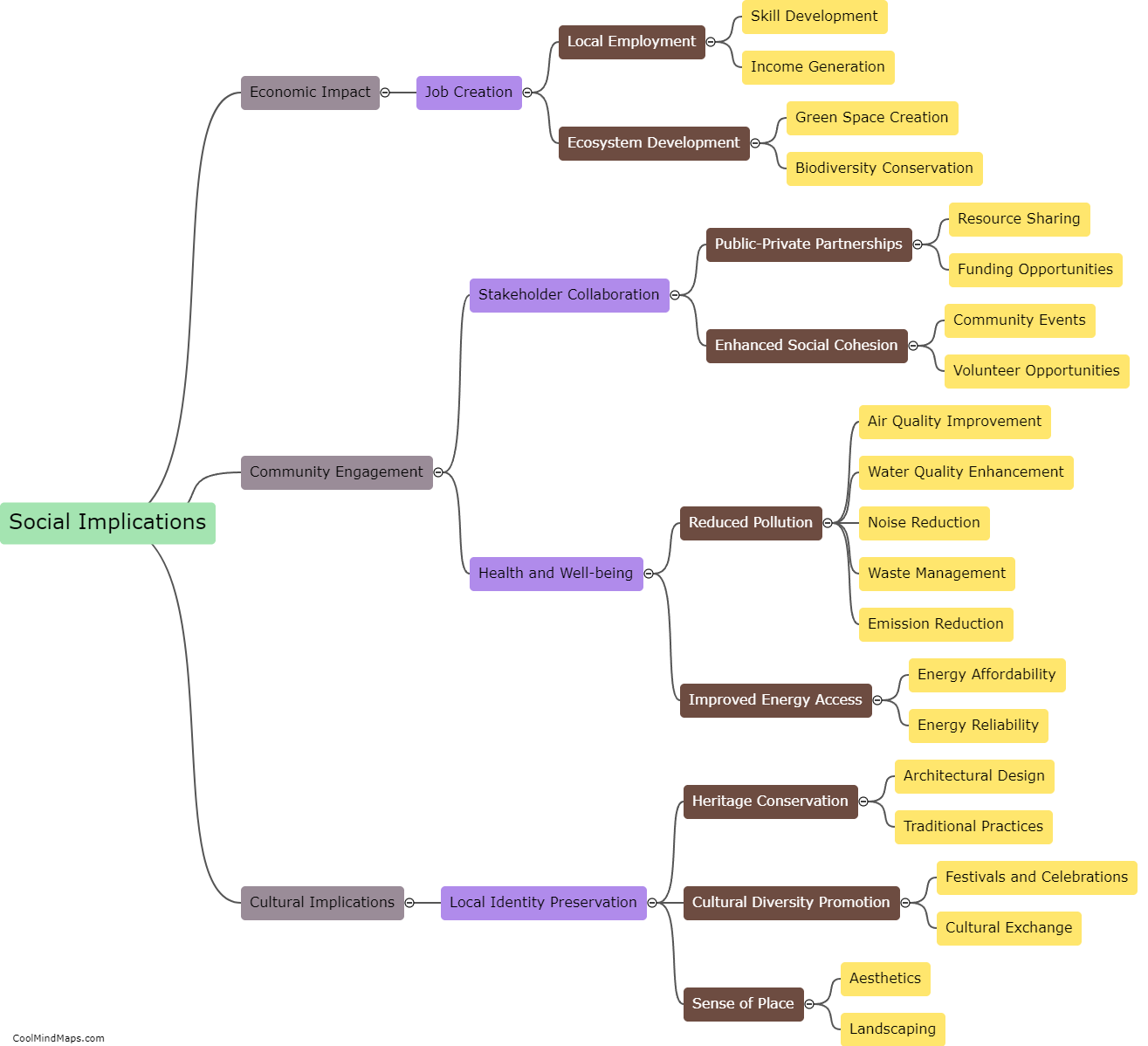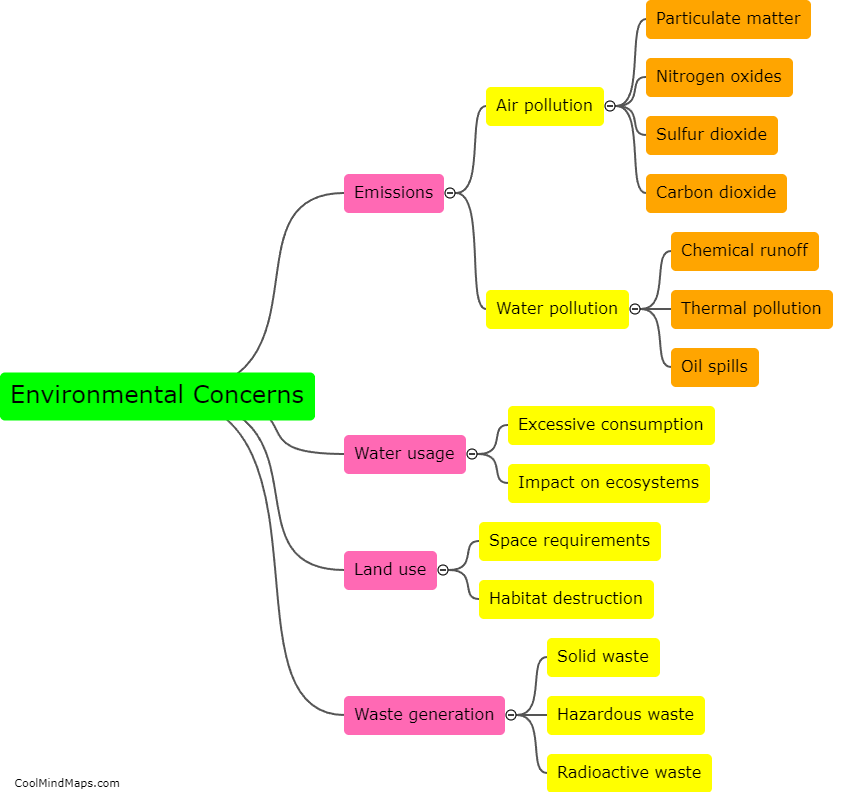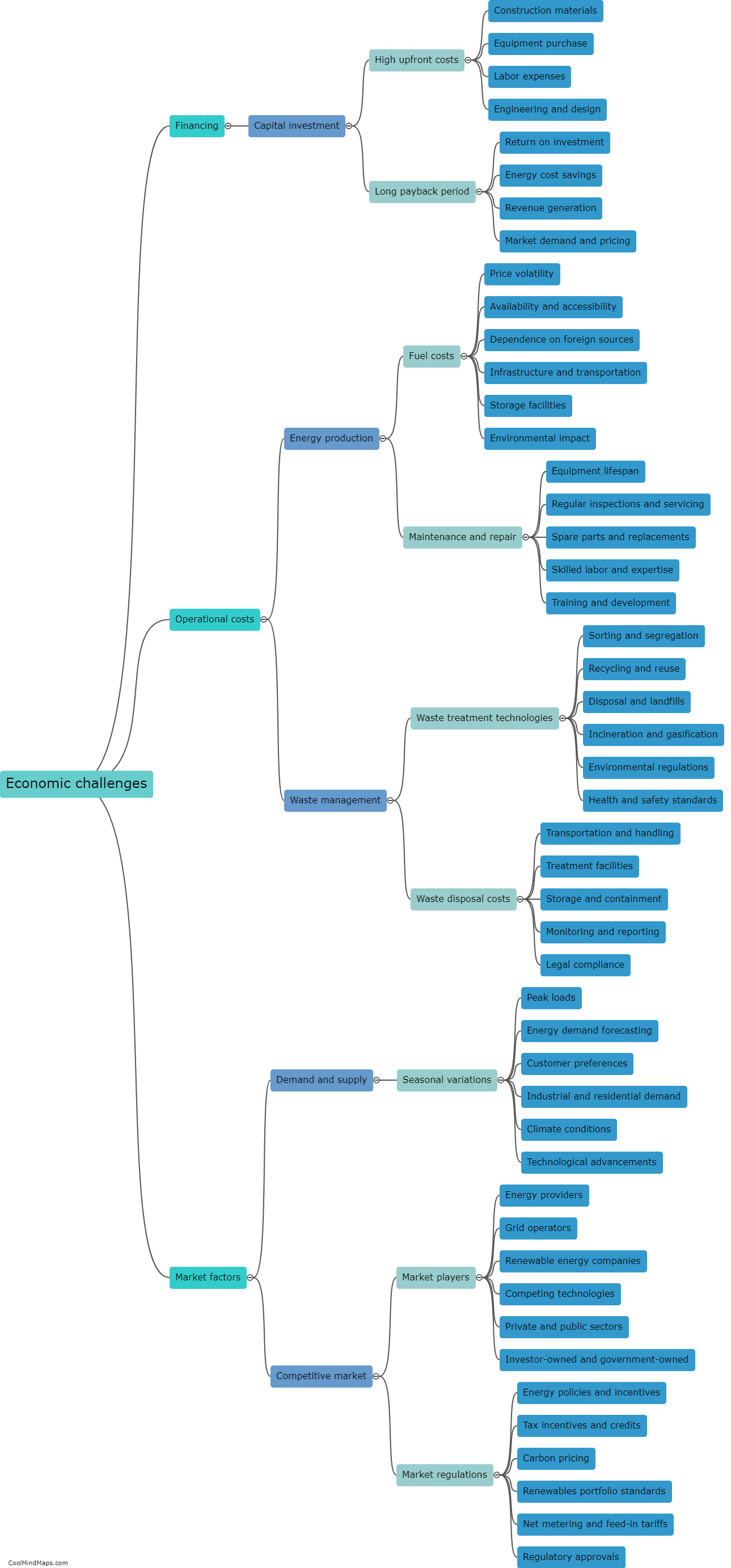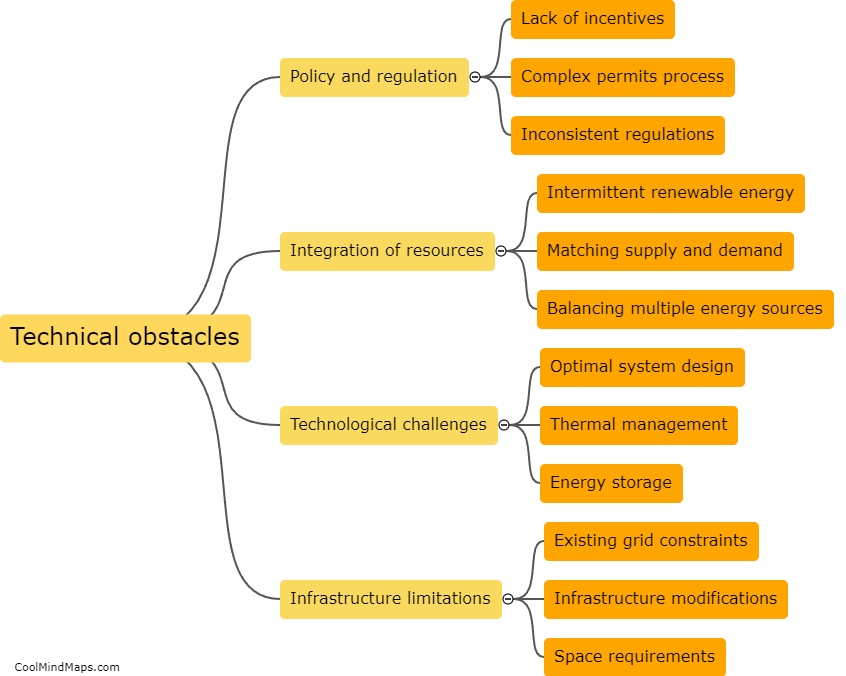What are the challenges of implementing fresh water ammonia polygeneration?
Implementing fresh water ammonia polygeneration faces several challenges. First, ammonia production requires a significant amount of energy, which can be costly and may contribute to greenhouse gas emissions if not generated sustainably. Secondly, freshwater resources are limited globally, and using them for ammonia production can strain already stressed water supplies. Additionally, ammonia production can pose environmental risks if not managed properly, as accidental releases of ammonia can be toxic to both humans and aquatic ecosystems. Finally, scaling up fresh water ammonia polygeneration systems to meet global demand can present logistic and infrastructural challenges, especially in regions lacking the necessary resources and expertise. Thus, addressing these challenges is crucial for the successful and sustainable implementation of fresh water ammonia polygeneration.
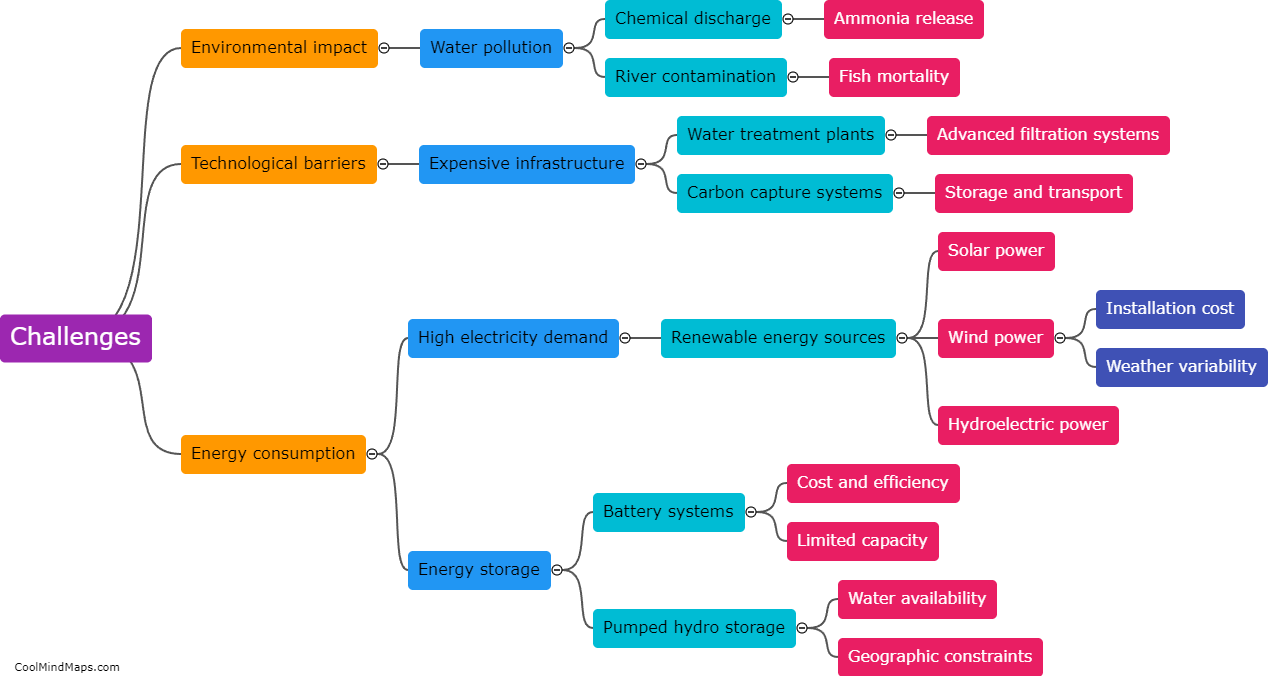
This mind map was published on 26 October 2023 and has been viewed 91 times.

